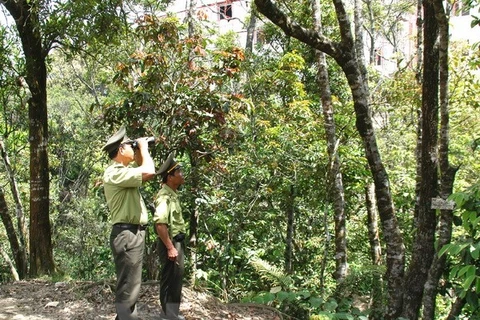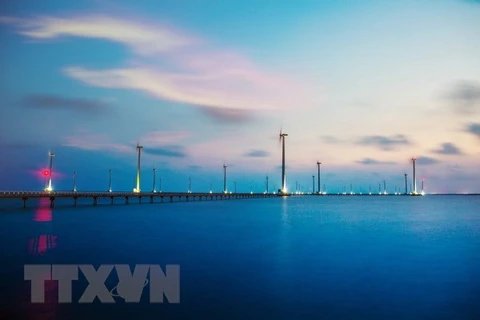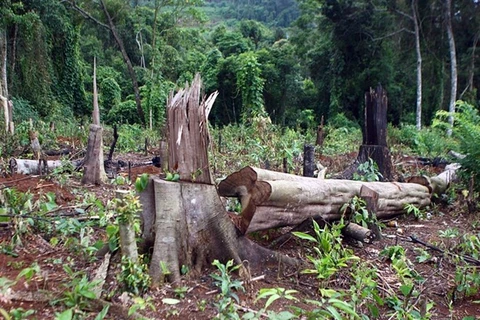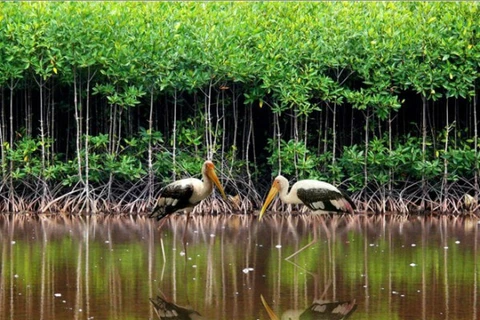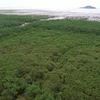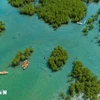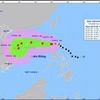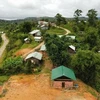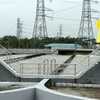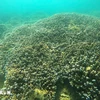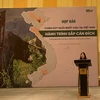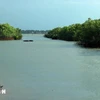Kien Giang (VNA) - The Mekong Delta province of Kien Giang has recovered its protective forests along coastal areas by enlisting the help of local residents to plant and protect mangrove trees.
The province, which has one of largest forest areas in the Mekong Delta, asked residents in the coastal districts of An Bien and An Minh several years ago to take care part of about 4,000ha of mangrove forests along a coastal line of 60km.
Tran Phi Hai, Director of the An Bien-An Minh Forest Management Board, said the mangrove forests included the main and buffer mangrove forest areas.
As many as 867 local households and organisations take care of 2,985ha buffer mangrove forest area, mostly spotted mangrove, he said.
The 1,012ha main mangrove forest area, mostly grey mangrove, includes 754ha of natural forest and 257.8ha of planted forest. The management board is responsible for the main mangrove forest area.
The buffer mangrove forests have favourable conditions for breeding aquatic species like shrimp, fish, mud clams, blood cockles, eels and crabs.
The management board in cooperation with the local households and organisations that protect mangrove forest buffer zones has protected the forests well.
Local authorities have helped the households to breed aquatic species, including instructing them in techniques and providing financial support for breeding new aquatic species like ba khia (Sesarma mederi), a mangrove crab species.
In An Bien district’s Nam Thai commune, many forest-protection households have bred the mangrove crab since 2017 and earned high profits.
However, many areas in buffer mangrove forests have eroded because of climate change, according to the management board.
To protect mangrove forests, the management board has implemented three mangrove recovery projects along coastal areas since 2016.
One project creates alluvial grounds for growing mangrove forests, which protects a sea dyke in An Bien’s Nam Thai commune. Around 35ha of grey mangrove have been planted.
Another project has recovered mangroves along coastal areas, starting from 2016 and ending in 2020. The project has planted new 170ha of grey mangrove in alluvial grounds and 88ha of spotted mangrove in buffer forest areas.
The management board has helped forest-protecting households and organisations replace dead mangrove trees.
Under current regulations, households and organisations have to ensure that 70 percent of the allocated forestry land is used to grow forests and that 30 percent of the allocated forestry land can be used to breed aquatic species.
The projects have helped recover mangrove forests and curb erosion, according to the management board.
However, the process of growing new mangrove forests has also faced problems such as strong waves and currents and erosion.
Strong waves, for example, caused erosion to alluvial grounds and damage to mangrove trees.
The illegal exploitation of aquatic species in newly planted mangrove forests has also caused the death of newly planted mangrove trees.
The provincial People’s Committee last year developed a project to protect and develop protective forests along coastal areas in Hon Dat and Kien Luong districts and Ha Tien town in 2016-20.
The project aims to protect 3,330ha of natural and planted mangrove forests and grow 203ha of new mangrove forests in alluvial grounds.
In Hon Dat, protective forests in many areas like Tho Son commune’s Hon Queo hamlet, Binh Son commune’s Vam Ray hamlet and Binh Giang commune’s Giong Ke hamlet have eroded because of climate change in recent years.
The province has 71,000ha of forests, including 26,000ha of protective forests.
Most of the protective forests are planted near the province's 200km coast line and on its islands.-VNA
VNA

